Savannah, Georgia is known as one of the most haunted cities in America, and Bonaventure Cemetery is known as one of the most haunted sites within Savannah!
Despite the rumored hauntings, Bonaventure is also one of the most picturesque cemeteries in the US.
This eerily beautiful Southern Gothic cemetery has been around since the 1800s. It is filled with rows of weathered gravestones resting under 250-year-old live oaks draped with Spanish moss.
The best time to visit is in March during the height of beauty when the azaleas and wisteria are blooming.
A visit to Savannah is not complete without a stop at Bonaventure, so keep reading to discover 12 fascinating facts about Bonaventure Cemetery in Savannah, Georgia!
12 Fascinating Things You Didn’t Know About Bonaventure Cemetery
Table of Contents
- 1. It is rumored that people have been buried alive at Bonaventure Cemetery
- 2. Bonaventure played a role in the American Revolutionary War
- 3. There is symbolism throughout the cemetery
- 4. The grave of Gracie, the six-year-old ghost, is found here
- 5. A famous sculptor created over 100 monuments in Bonaventure
- 6. The co-founder of Capitol Records is buried here
- 7. Bonaventure Cemetery plays a starring role in the book and movie Midnight in the Garden of Good and Evil
- 8. An empty crypt that was robbed by grave diggers can be found at Bonaventure Cemetery
- 9. Discover the truth of a rumored ill-fated love story ending in suicide
- 10. The ash remains of 344 Holocaust victims can be found at Bonaventure Cemetery
- 11. John Muir slept on the graves at Bonaventure
- 12. There are underground grotto chapels at Bonaventure Cemetery
1. It is rumored that people have been buried alive at Bonaventure Cemetery
Before modern technology such as heart monitors, sometimes people in comas with a low pulse rate were mistakenly buried alive.
Although it was a rare occurrence, there is proof that this did happen on occasion.
As evidence, they have found scratch marks inside of caskets when bodies have been exhumed or ransacked by grave robbers.
In order to prevent this from happening, a string would be tied to the finger of the deceased and attached to a bell next to the grave, which is where the phrase “saved by the bell” came from.
The family would then pay someone to watch the grave, which is where the term “graveyard shift” originated.
This is also why families began holding a “wake” to ensure that their loved ones didn’t wake before being buried.
And if you’re familiar with the phrase, “dead ringer”, it is referring to someone that resembles a deceased person as if they came back from the dead.
2. Bonaventure played a role in the American Revolutionary War
The Bonaventure Cemetery sits on the site of a former plantation.
This plantation was owned by Colonel John Mullryne who named it Bonaventure Plantation, meaning Good Fortune, which is a little ironic after it was turned into a cemetery.
Mullryne’s daughter, Mary, married Josiah Tattnall Sr. If you see an aerial shot of the cemetery, you’ll even notice that many of the oak trees on the plantation were planted in the shape of the letters M and T.
By 1771, Mullryne and Tattnall saw good fortune indeed as their plantation expanded to over 9,000 acres, comprising most of the Savannah Region.
However, once the American Revolutionary War broke out, Mullryne and Tattnall both pledged their loyalties to Great Britain.
They even helped Royal Governor, James Wright, escape back to England by hiding him at Bonaventure until he could board a ship home.
As was the case with all Loyalists in Georgia, they were seen as traitors and stripped of all their land.
Their plantation was sold at auction in 1782 while Tattnall fled to England and Mullryne escaped to the Bahamas where he died a few years later.
John Habersham purchased a 750-acre tract which he sold back to Tattanall’s son Josiah Jr. a few years later.
With Bonaventure Plantation back in the family, it became the final resting place for the Tattnall family. The first burial plot on the land belongs to Josiah’s wife, Harriet, in 1802.
In 1846, the plantation and family cemetery were sold to Peter Wiltberger where he was also buried a few years later. Peter’s son converted Bonaventure to a private cemetery called Evergreen Cemetery in 1868.
In 1907, Evergreen Cemetery was purchased by the city of Savannah where they changed the name to Bonaventure and made it a public cemetery.
Today, Bonaventure is the largest of Savannah’s municipal cemeteries, encompassing nearly 160 acres.
As a side note, keep your eye out for the Daughters of the American Revolution grave markers. These indicate the gravesite of Revolutionary War soldiers, patriots, their wives, and daughters.
You’ll also see the graves of those who died during the Civil War, as well as those killed during the Spanish-American War.
3. There is symbolism throughout the cemetery
We took a guided Segway Tour of Bonaventure Cemetery in Savannah and it was such a fun way to learn more about Bonaventure’s history.
Our guide, Carolyn, pointed out all of the interesting symbolisms on the headstones throughout the cemetery.
If you take notice of the beautiful statues and symbolism, the cemetery becomes an outdoor museum of sorts.
For example, if you see the statue of a stump at a grave, it means that a life was cut short.
You’ll also notice the statue of a tree trunk at this particular gravesite for a WWI soldier.
This symbolizes that he was an only child and had no wife or children. There are no more branches extending on his symbolic and literal family tree.
It is also interesting to note that on the headstone it refers to WWI as “The World War”. Many supposed that it would be the war to end all wars. Little did they know.
You’ll also find statues throughout the cemetery representing the seven virtues: chastity, temperance, charity, diligence, patience, kindness, and humility.
They are placed at the graves of those whose family members felt that they exemplified that particular virtue throughout their life.
You’ll also find symbolism in the feet of the statues. If the feet are bare, then it means that the person who is buried there is walking with Jesus.
If you see a statue of an angel, it shows that the deceased was welcomed safely into heaven in the afterlife.
It is also common to see grave markers in the shape of a small cradle indicating the grave of a child.
The mortality rate in the 1800s was significantly higher than it is today. Only 54% of children made it to their 5th birthday.
If the lettering on the headstone is raised instead of engraved, it is a sign of wealth.
If you look closely, you may even find a few headstones with misspelled words. After spending all the time and money, they couldn’t very well throw it away and start over!
Obelisks were also a sign of wealth. The taller the obelisk, the more wealth was displayed. It became a sort of status symbol and contest to see who could erect the tallest obelisk.
Finally, after a 55-foot obelisk was installed they capped the maximum height at 5 feet tall for any future obelisks.
4. The grave of Gracie, the six-year-old ghost, is found here
One of the most famous residents of Bonaventure Cemetery is Gracie Watson, the sweet 6-year-old that supposedly haunts the Regions Bank.
Gracie’s parents managed the prestigious Pulaski hotel in Savannah where Gracie was beloved by all the guests.
She was known to sing, giggle, smile, dance, and play around the hotel at the delight of its patrons.
However, in 1889 when Gracie was only six years old, she fell ill with a fatal case of pneumonia and died just days before Easter.
Her parents were utterly distraught and commissioned the famed sculptor, John Waltz, to carve a statue with her exact likeness even down to her favorite dress.
Creating statues resembling the deceased was a common practice during the Victorian era and many such statues can be found throughout Bonaventure Cemetery.
This allowed grieving family members to keep the memory of loved ones alive after they had passed by immortalizing their likeness in marble.
Her monument also includes a tree cut in half, symbolizing a life cut short.
You’ll also find ivy climbing toward heaven and her eyes looking up toward heaven where she rests in peace.
For over a century, little Gracie’s grave has been one of the most popular stops for visitors of Bonaventure Cemetery.
The iron gate surrounding her burial plot is lined with toys, flowers, coins, and small gifts left by visitors wishing her peace and comfort in the afterlife.
After Gracie’s passing, her mother and other hotel staff claimed to have heard her laughter and singing echoing throughout the halls of the hotel and under the back stairs where she loved to play.
The Pulaski Hotel was eventually demolished with a cafe being built in its place.
The cafe has since been converted to the Regions Bank on Johnson Square where patrons and workers claim to still hear her laughter.
Rumor has it that she plays pranks on unsuspecting people, like pulling makeup out of women’s purses.
Some have even seen the apparition of a young girl in 1880s attire wandering around the bank and other locations around Savannah.
It is also said that if you take any of the gifts left at her grave then her statue will cry tears of blood.
Whether you believe in ghosts or not, it is evident that the memory of Gracie Watkins still lives on.
For an added thrill, book an after-hours cemetery tour. It is rumored that once the sun goes down, you can hear the faint cry of babies and whispers of laughter. You may even see the ghost of Gracie!
5. A famous sculptor created over 100 monuments in Bonaventure
John Walz was born in Germany and immigrated to the US when he was 14 years old.
He worked as a stone cutter for eight years until he was able to save enough money to return to Europe and pursue his education.
Walz studied sculpting in Paris and Vienna before returning to the United States where he embarked on a successful career in sculpting.
He fell in love with Savannah after his employer was commissioned to create the statues that stand in front of Telfair Academy.
His talent did not go unnoticed and he soon became in high demand for sculpting gravesite monuments.
To this day, over 100 monuments and sculptures that were hand-carved by Walz can be found at Bonaventure Cemetery, including Gracie Watkins.
Another notable work of art can be found in the Taliaferro family plot. Here you’ll find an angel hovering over a massive stone cross with a fern lying on top. The cross and fern were actually carved using a single piece of stone.
John Walz died in 1922, and surprisingly after spending his life creating masterpiece memorials, he was actually buried in a grave marked only by a simple wooden sign.
Recently, the Bonaventure Historical Society commissioned a monument in its place.
They have also dedicated a 4,000-square-foot memorial garden in his name, as well as naming a street in the cemetery in his honor.
6. The co-founder of Capitol Records is buried here
Johnny Mercer is one of Savannah’s, and Bonaventure’s, most famous residents.
He was born in Savannah in 1909 but was destined for bigger things. Mercer made his way to New York where he joined Paul Whiteman’s orchestra and wrote lyrics for Broadway musicals.
He went on to Hollywood where he wrote songs for major motion pictures and became one of America’s most notable songwriters.
Mercer produced many of the top hits from the 1930s to the 1960s.
One of his most popular songs is “Moon River” from the film Breakfast at Tiffany’s.
Other hits include, “I’m an Old Cowhand from the Rio Grande”, “Jeepers Creepers,” “Hooray for Hollywood,” “You Must Have Been a Beautiful Baby,” and “Ac-cent-tchu-ate the Positive”. He even won four Academy Awards for Best Original Song.
In 1942 he co-founded Capitol Records, the first West Coast-based record label and the US record label of the Beatles.
Mercer died from an inoperable brain tumor in Bel Air, California in 1976.
His body was transported across the country where he was buried in his family’s plot at Bonaventure Cemetery in Savannah.
You can even see memorable lines and titles from his songs inscribed on the headstones of each family member. His wife Ginger’s reads, “You must have been a beautiful baby.”
If you read the book or watched the movie, Midnight in the Garden of Good and Evil, the name ‘Mercer’ will also ring another bell.
Johnny’s great-grandfather designed the Mercer-Williams home where the murder of Danny Hansford took place.
7. Bonaventure Cemetery plays a starring role in the book and movie Midnight in the Garden of Good and Evil
Bonaventure Cemetery has always drawn visitors for its haunting beauty.
However, the burial grounds have seen a dramatic increase in tourists since the release of the bestselling novel and subsequent movie, Midnight in the Garden of Good and Evil.
The cover of the book features a statue known as Bird Girl that once resided in the cemetery.
After fans of the book incessantly trampled the family plot to snap a photo of the statue, the family decided to donate Bird Girl to Savannah’s Telfair Academy Museum where it is safely on display.
The statue is not the only tie that the cemetery has to the book.
In the book, the voodoo priestess Minerva routinely performed spells over Danny Hansford’s grave at Bonaventure Cemetery to vindicate Jim Williams of his murder.
In reality, Danny Hansford’s grave is actually located at Greenwich cemetery adjacent to Bonaventure.
Conrad Aiken is also mentioned in the book. He is the poet laureate that witnessed the brutal shooting of his mother at the hands of his father. His father then turned the gun on himself and committed suicide.
Conrad was born in Savannah in 1889 and spent the first 11 years of his life at 228 Oglethorpe Street. After the death of his parents, he moved to Massachusetts with his two siblings to live with their aunt.
He attended Harvard where he formed a lifelong friendship with TS Elliot.
Aiken went on to win the Pulitzer Prize for poetry and became a National Book Award winner for his novels and short stories.
He also served as the poetry consultant to the Library of Congress and was inducted into the Georgia Writer’s Hall of Fame.
He returned to Savannah at age 73 and once again lived on Oglethorpe Street right next door to the house where he grew up.
In a poetic turn of fate, he lived the last 11 years of his life on Oglethorpe Street just as he did the first 11 years.
Aiken’s parents are both buried at Bonaventure on a peaceful plot overlooking the Wilmington River.
Aiken placed a bench at their gravesite where he would often sit and drink martinis while watching the river at sunset.
The bench is inscribed with the words, ”Cosmos Mariner Destination Unknown.” While at the cemetery, Aiken had once observed a ship called Cosmos Mariner gliding down the river. He later looked up the shipping schedule in the newspaper and the record said “destination unknown.”
Conrad and his third wife are both buried at the family plot next to his parents.
8. An empty crypt that was robbed by grave diggers can be found at Bonaventure Cemetery
John Mongin was the owner of one of the first steamboats operating between Savannah and Charleston. He also owned 11 plantations and enslaved hundreds of people.
Mongin died on Daufuskie Island in South Carolina in 1833. He was buried in this massive family crypt modeled after the pyramids in ancient Egypt.
In the early 1900s, the crypt was shipped 14 miles downriver where it was relocated to Bonaventure Cemetery.
It sits right on the shore of the river on the outskirts of the cemetery because it was too difficult to move it much further!
Not only is this crypt unique in that it was transported from such a distance, but it was also victimized by grave robbers.
If you look around the door frame, you’ll see marks from the tools they used to break in.
They ransacked the grave and stole everything inside, including not only the Mongin family heirlooms but also the human remains of 11 family members.
Today it sits completely empty exactly where it was deposited over 100 years ago.
9. Discover the truth of a rumored ill-fated love story ending in suicide
One of the most controversial stories is in relation to Corinne Elliott Lawton.
Many like to believe the Romeo and Juliet-esque version as it makes for a better story.
Legend has it that Corinne was in love with a young man that was below her family’s social standards. Her parents did not approve and forced her into an arranged marriage.
On the eve of her wedding day, instead of living a life without her true love she threw herself into the Wilmington River and drowned.
However, published accounts from her mother’s diary tell a different story. She writes that Corinne succumbed to a bout of Yellow Fever after being sick for 10 days and died in her bed while surrounded by family.
Many also believe that the statue that was erected in her likeness is wearing shoes which symbolizes that Corinne is not walking with Jesus.
They also believe that she is situated away from the rest of the family plot with the statue of Jesus behind her to show that she is turning her back to Jesus and the family by committing suicide.
The truth is that the statue of Jesus at the arched gateway marks her father’s grave whose memorial was built after Corinne had already died.
Her father, Alexander Lawton was a prominent figure in Savannah Society.
So much so, that the family felt the need to commission a statue of Jesus himself symbolically welcoming Lawton into the arched gateway of heaven.
He served the community as a lawyer, politician, President of the Augusta and Savannah Railroad, Brigadier General in the Army of the Confederacy, and President of the American Bar Association.
Whether you choose to believe the romantic version of the story or not, the truth is that Corinne’s life was cut short and the sorrow can be seen in the sad empty eyes of her statue.
*Related Post: Best Things to Do in Charleston SC on a Girl’s Weekend
10. The ash remains of 344 Holocaust victims can be found at Bonaventure Cemetery
The Jewish cemetery within Bonaventure is a beautiful area to visit. There are a few things worth noting in this portion of the cemetery.
You’ll notice that many of the headstones are engraved with the picture of two hands touching at thumbs with their middle fingers split in a “V”.
If it looks similar to the “live long and prosper” gesture that Mr. Spock used on Star Trek, that is because it is the same gesture.
Leonard Nimoy, the actor playing Mr. Spock, is Jewish. He adopted the symbol from the Jewish priests who make this gesture at the end of services in Orthodox synagogues as a traditional Jewish blessing.
The hand gesture forms the letter “Shin” which represents the name “Shaddai” meaning ‘Almighty God’.
You’ll also notice rocks being placed on top of the headstones throughout the Jewish cemetery. There are several theories as to why visitors leave rocks on headstones.
Some believe that the rocks prevent evil spirits and demons from entering the burial site and taking possession of their souls.
Others believe putting stones on the grave will keep the soul down in this world.
However, according to the Bonaventure Historical Society, leaving rocks is an “old Jewish tradition of showing visitation”. Rocks last longer and have more permanence than leaving flowers.
One of the most notable graves in the Jewish cemetery contains the ash remains of 344 victims who perished at the Hannover-Ahlem Concentration camp during the Holocaust.
If you are curious how and why the ashes were transported all the way from Germany to Savannah, here is the history.
11. John Muir slept on the graves at Bonaventure
John Muir, also known as “John of the Mountains” and “Father of the National Parks”, was an early advocate for wilderness preservation.
At age 29, Muir embarked on a 1,000-mile walk from his home in Indiana to the Gulf of Mexico in Florida to experience and study the natural world.
During his infamous trek, he spent six days and nights in the Bonaventure Cemetery.
He reasoned that sleeping on the graves was the safest and cheapest accommodation that he could find.
Muir was enamored by the beauty and intrigue of Bonaventure and even penned an entire chapter called “Camping in the Tombs” in his book, A Thousand-Mile Walk to the Gulf.
He refers to Bonaventure as a place “so beautiful that almost any sensible person would choose to dwell here with the dead rather than with the lazy, disorderly living.”
Muir was especially captivated by the live oaks and wrote:
“The most conspicuous glory of Bonaventure is its noble avenue of live-oaks. They are the most magnificent planted trees I have ever seen, about fifty feet high and perhaps three or four feet in diameter, with broad spreading leafy heads. The main branches reach out horizontally until they come together over the driveway, embowering it throughout its entire length, while each branch is adorned like a garden with ferns, flowers, grasses, and dwarf palmettos.”
12. There are underground grotto chapels at Bonaventure Cemetery
During the Victorian era, cemeteries were considered America’s first parks. They were referred to as “gardens” and were seen as a place to gather.
Families would spread out blankets on the lawn and enjoy Sunday picnics with their deceased relatives.
It was also a chance to flaunt your family’s wealth with ornate memorials. And there are few things that boast wealth quite like taking a secret staircase to an underground chapel at your family’s crypt.
It is estimated that there are about a dozen underground grotto chapels located at Bonaventure Cemetery.
These chapels were common during this era and symbolized the tomb that Jesus was interred in and risen from.
The chapels were quite large, boasting an average of 6 pews, a podium for the pastor, and about 6-12 caskets and urns.
There were even iron stoves that were used to heat the chapel and rudimentary plumbing that piped fresh drinking water into the chapel.
After the family and their valuables were all interred, the grotto chapel and crypt were then sealed off and disguised in order to prevent thieves from breaking in.
Some underground chapels are still distinguishable by a large cement pad surrounding the headstones. However, many have been covered with grass to further deter grave robbers.
And there you have it, 12 fascinating things you didn’t know about Bonaventure Cemetery in Savannah!
I hope this guide has helped inspire and prepare you to visit Bonaventure Cemetery Savannah. It truly is one of the most beautiful and fascinating cemeteries in America.
And while you’re in Savannah, be sure to check out our guide 12 Things to do in Savannah and 8 of the Best Places to Eat in Savannah for more recommendations!
While it is free to visit Bonaventure, I would highly recommend taking a guided tour for a more in-depth experience.
If you have the flexibility, the Bonaventure Historical Society hosts one-hour long free tours on the second weekend of the month.
Also, if you are looking for the location of a specific grave mentioned in this post, such as Gracie, Conrad Aiken, Johnny Mercer, or Corinne, then you can input their information at Find A Grave to find the location.
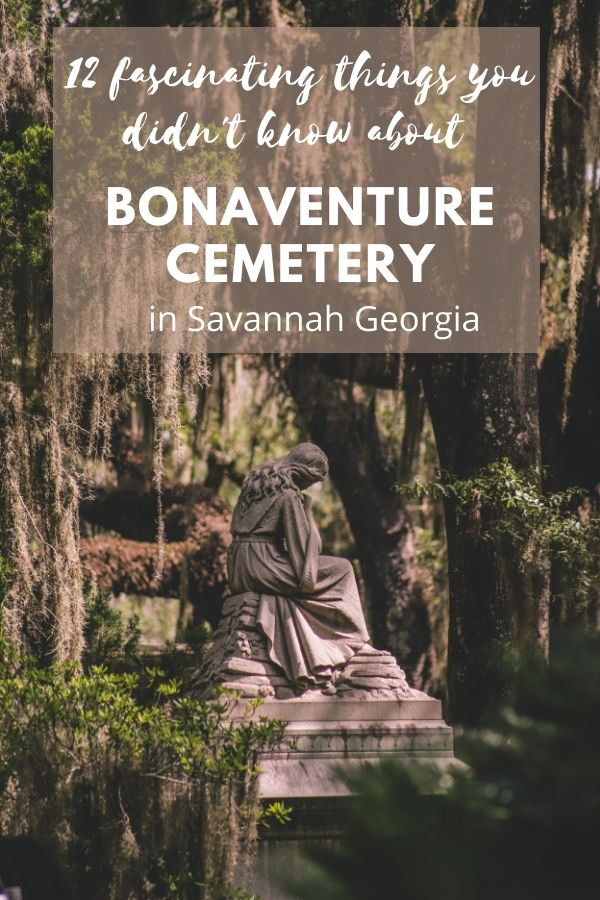
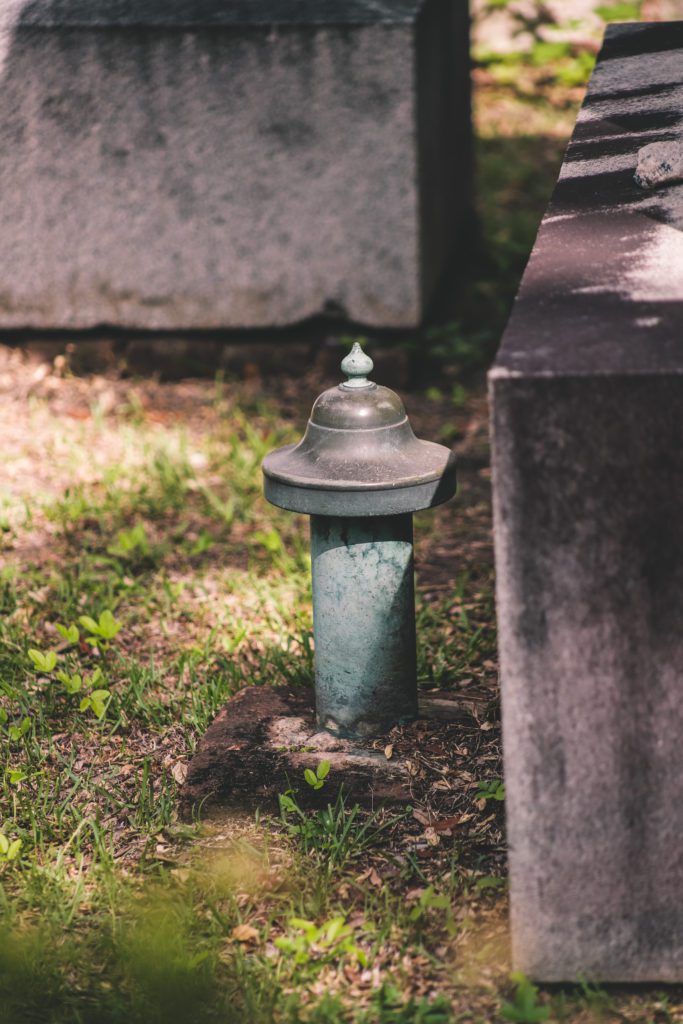
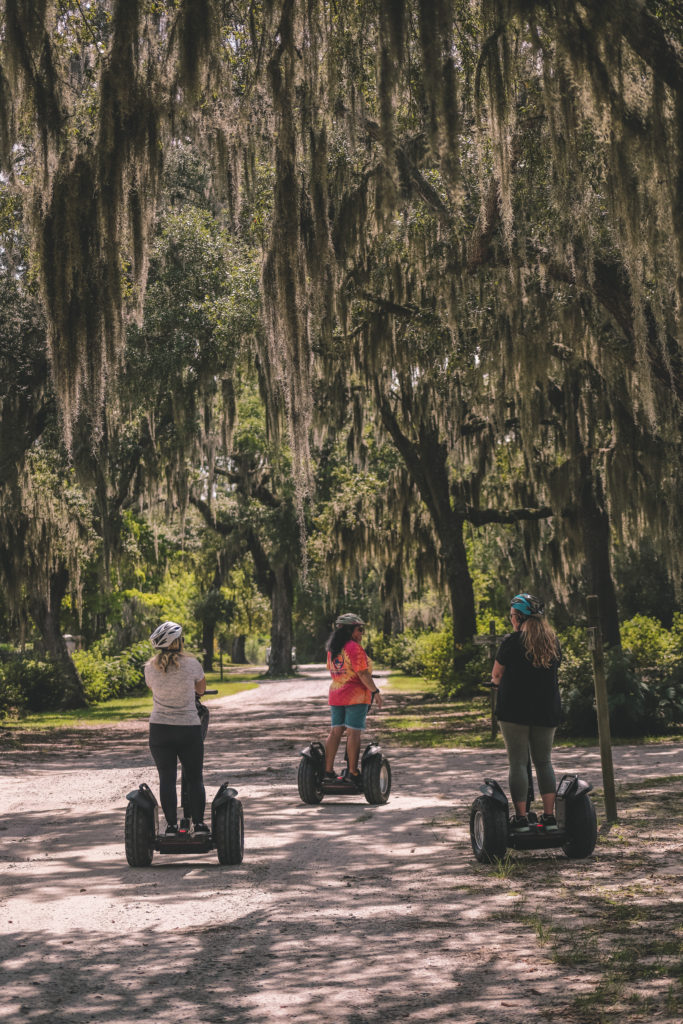


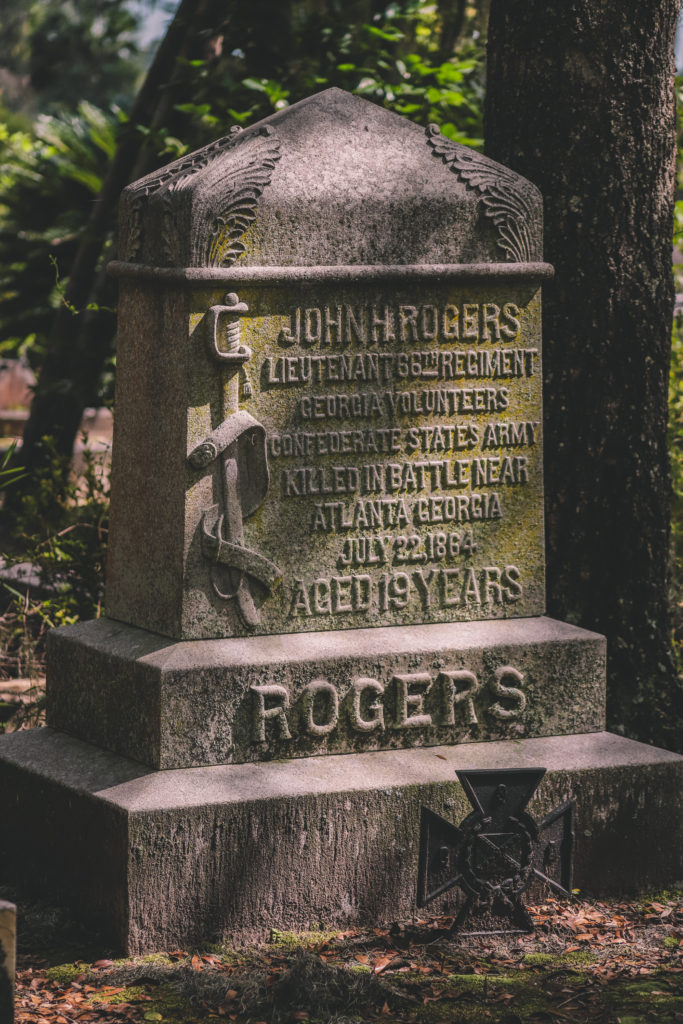


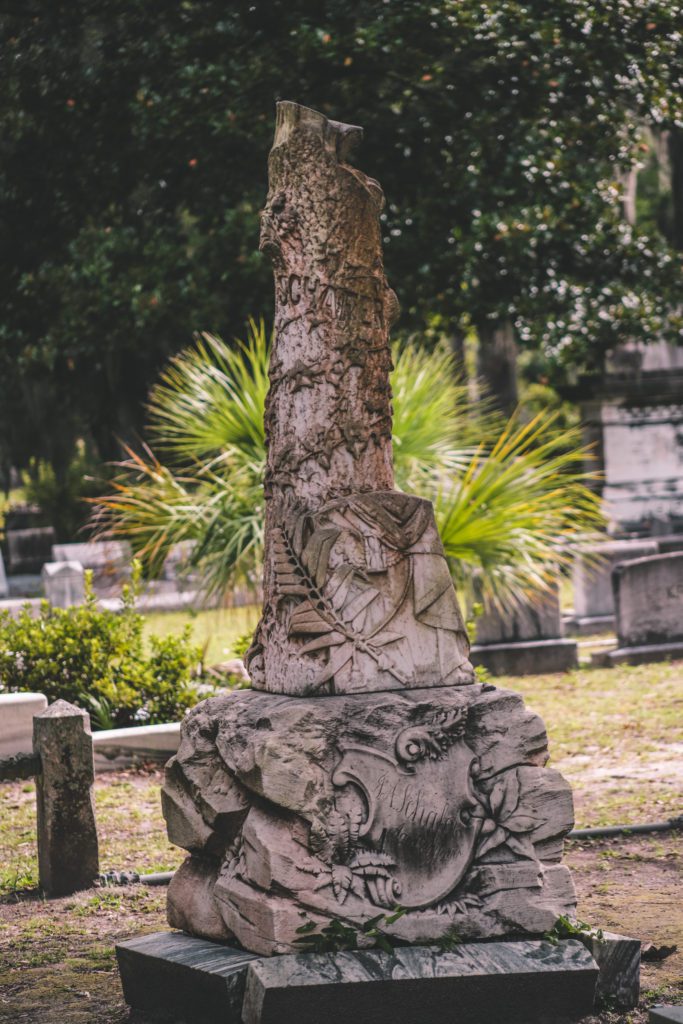
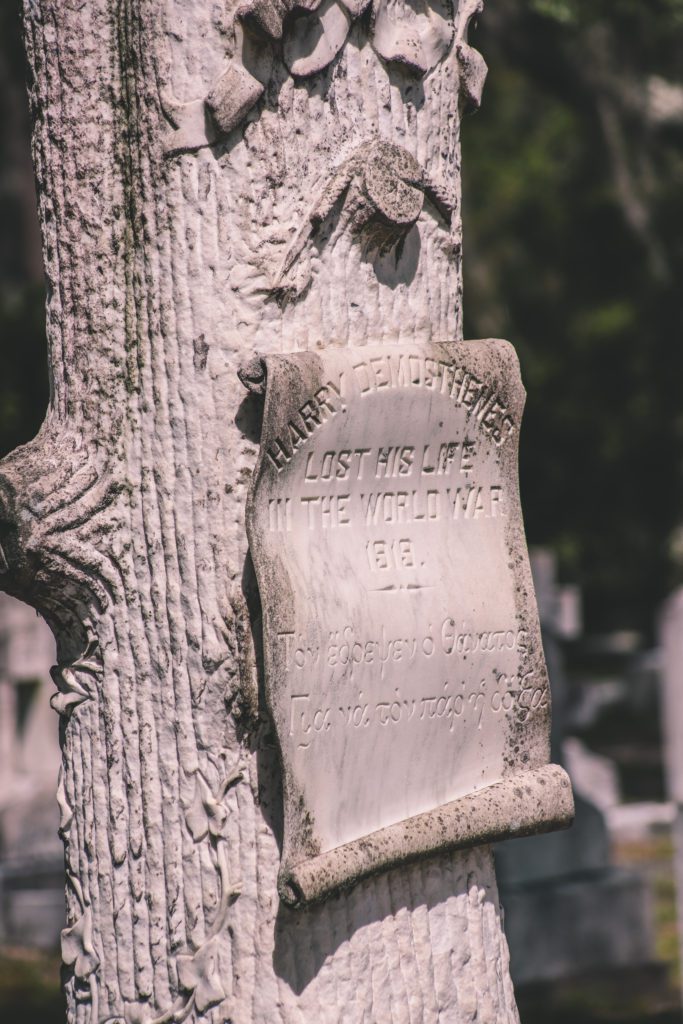
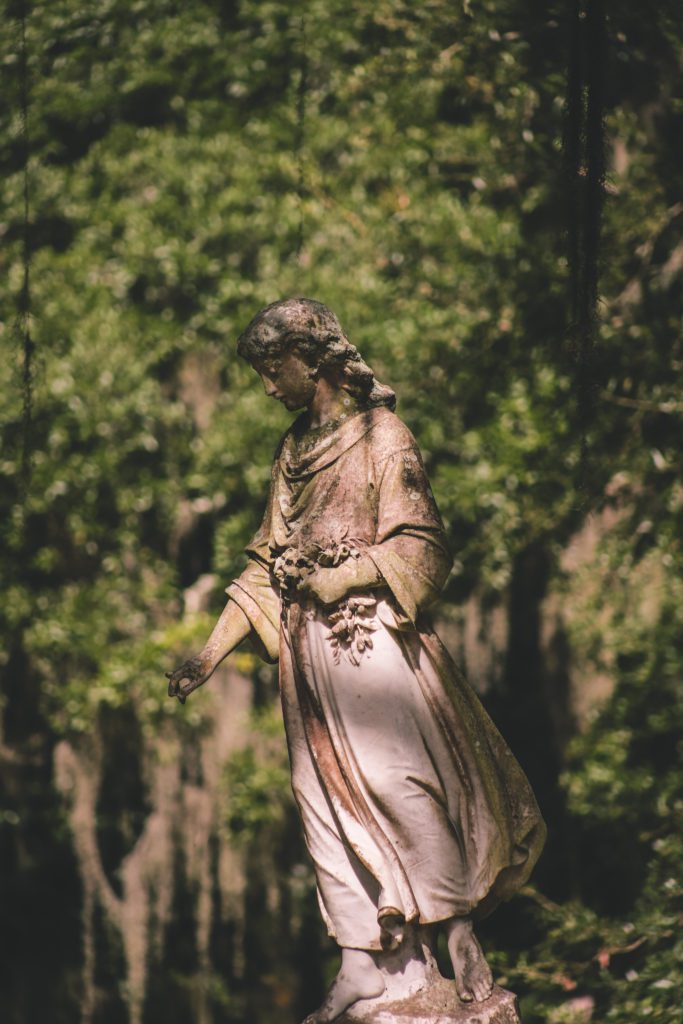
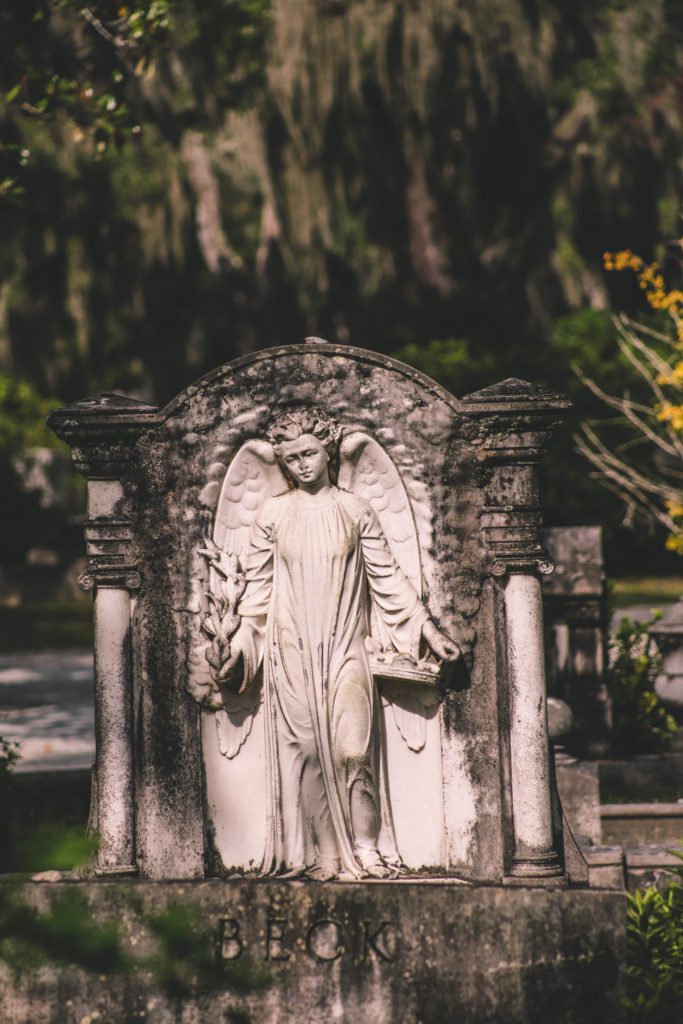
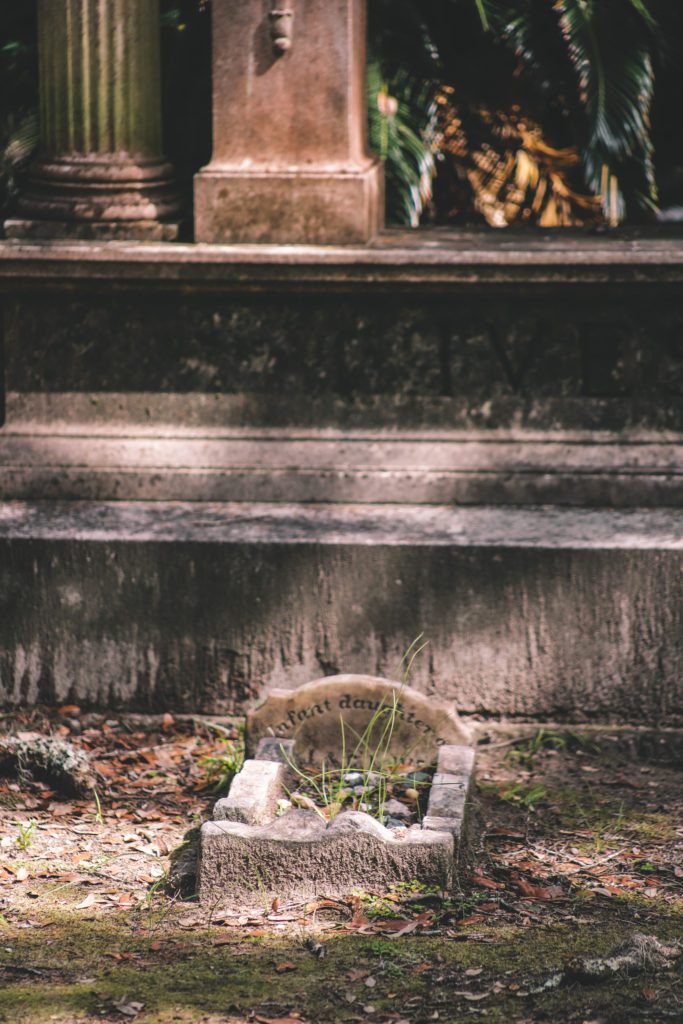
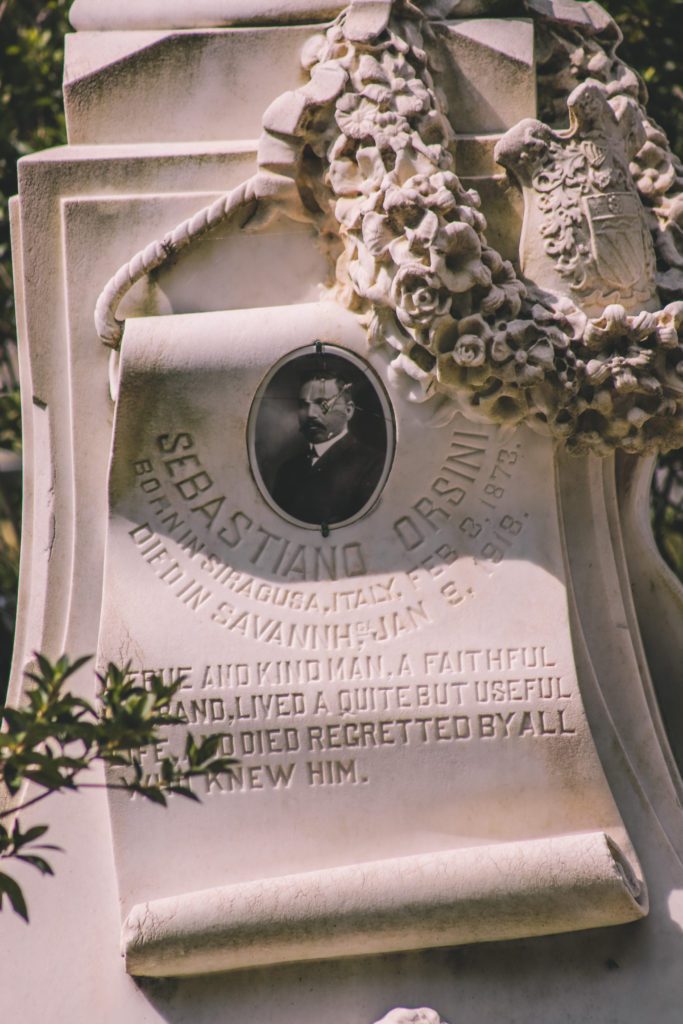
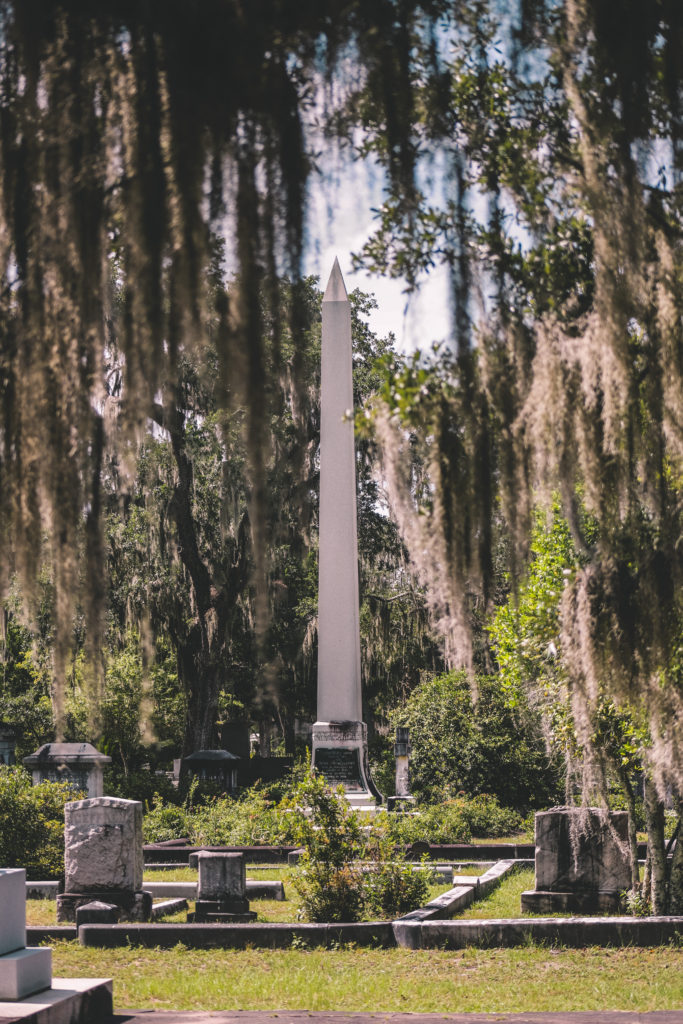
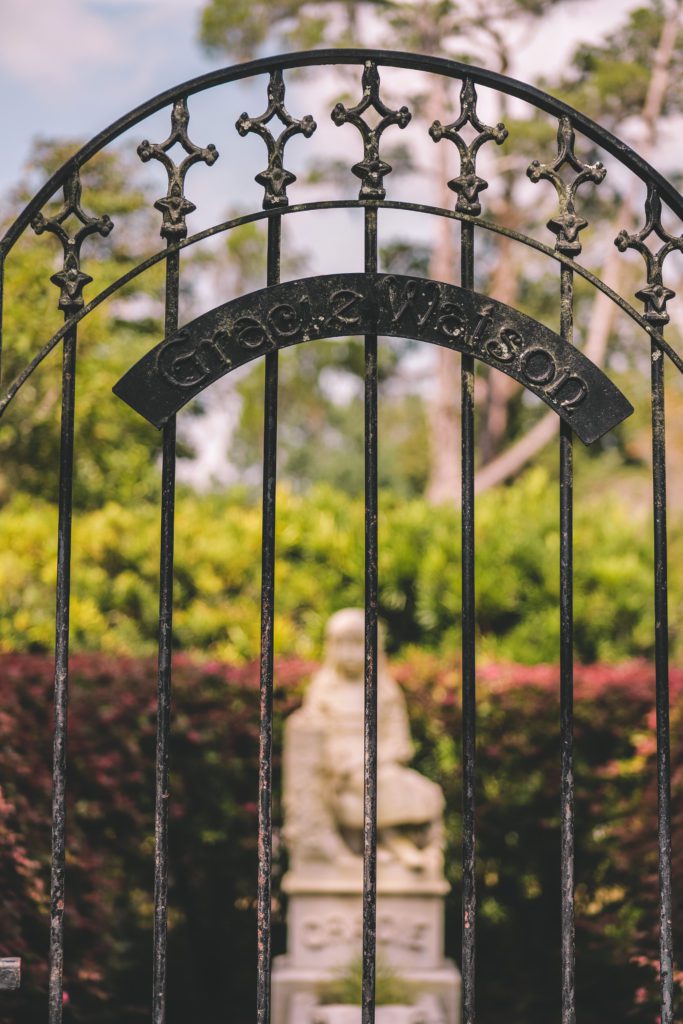
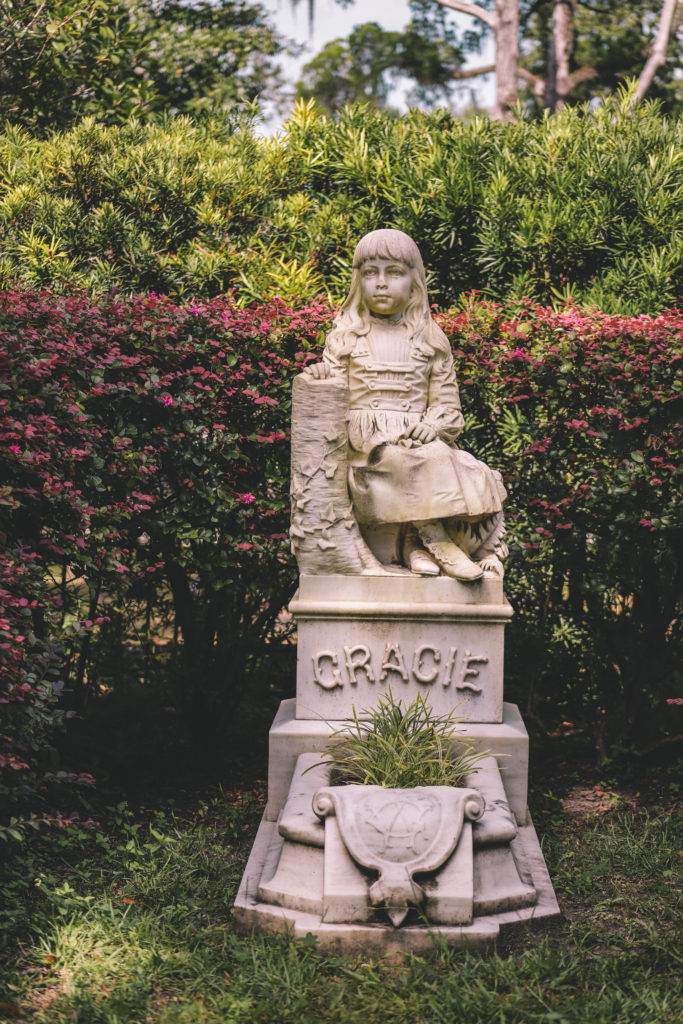
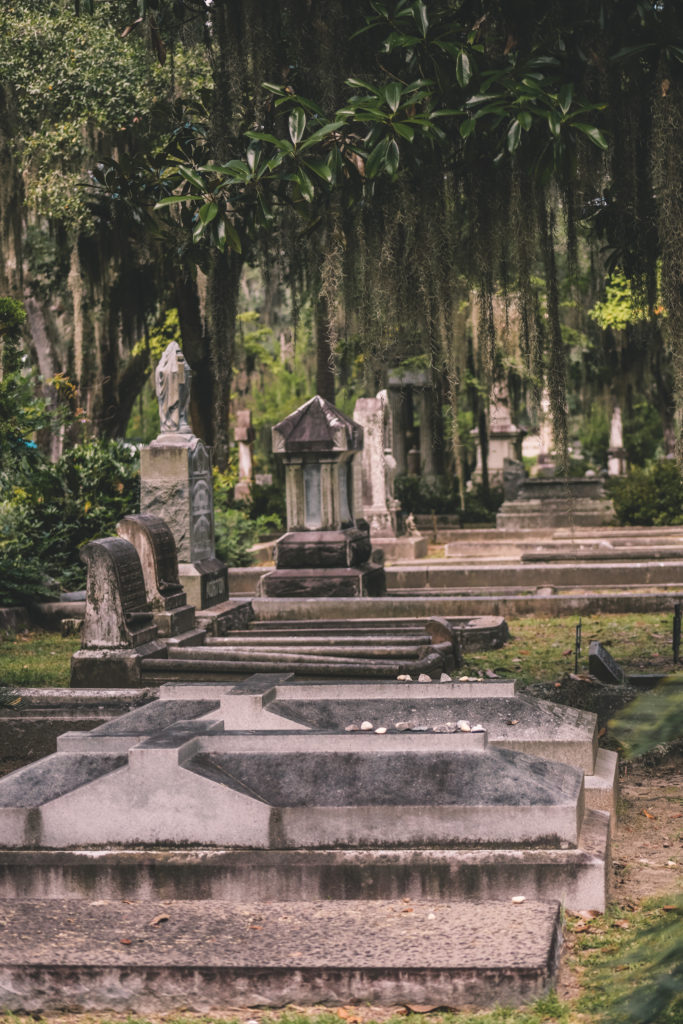
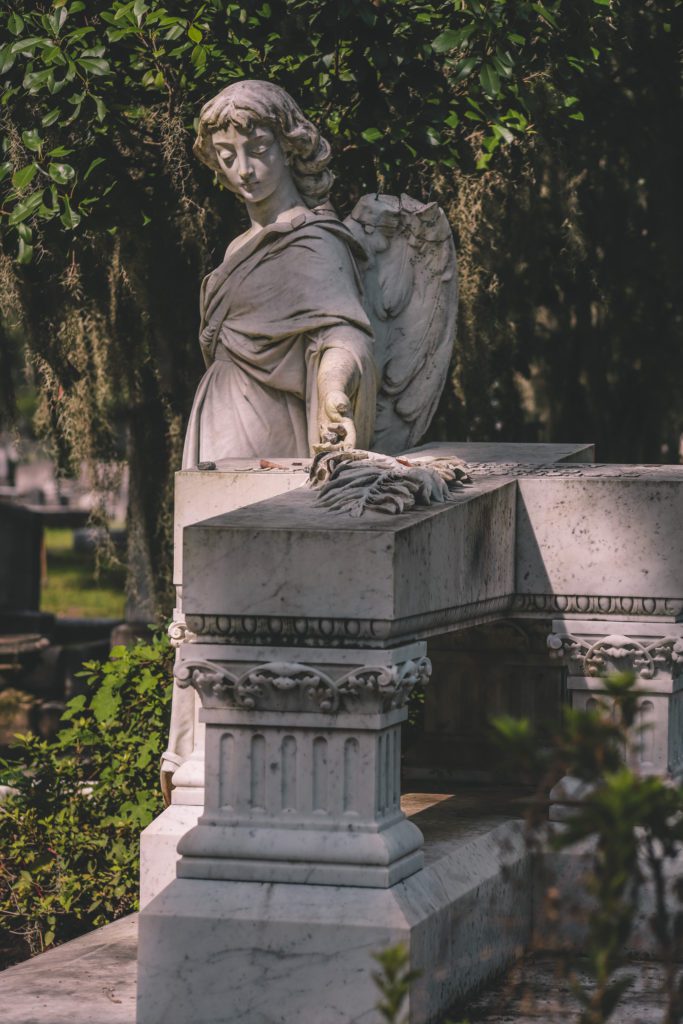
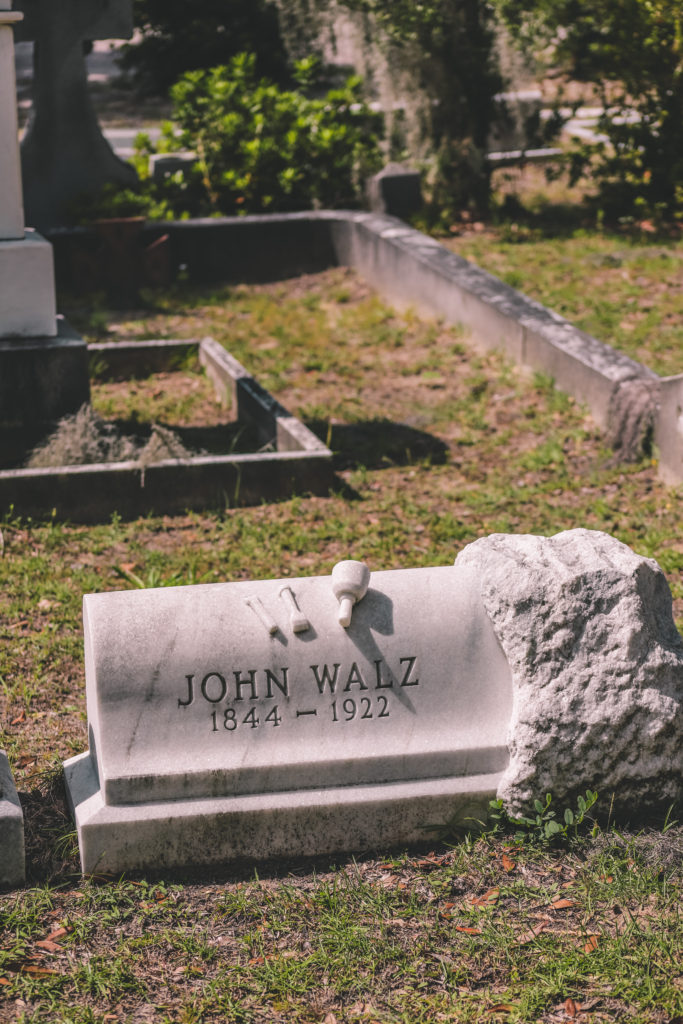
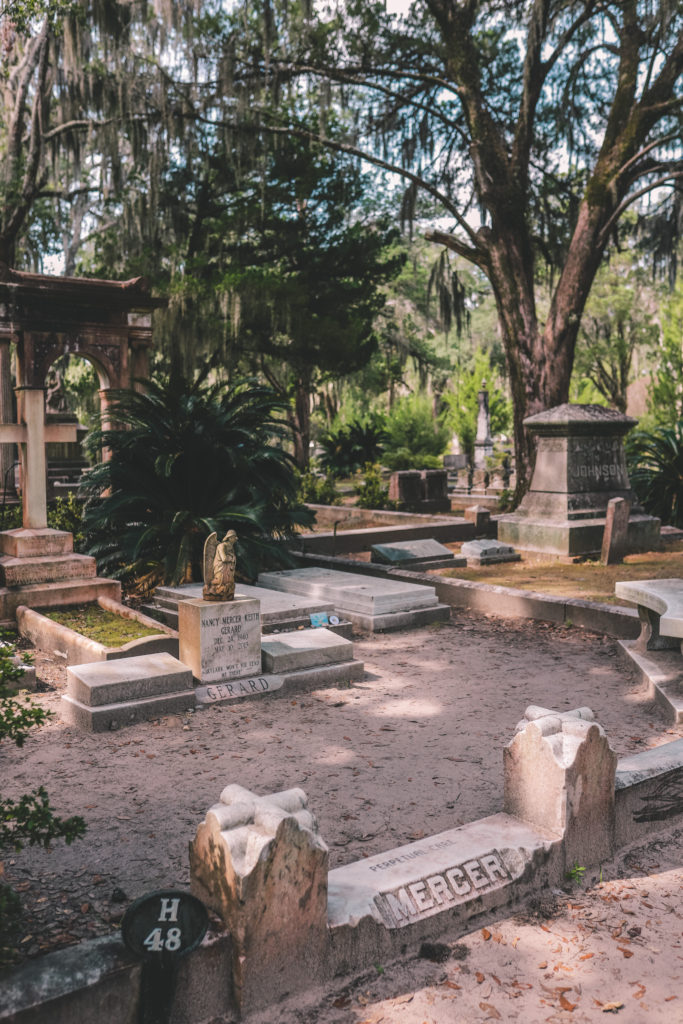
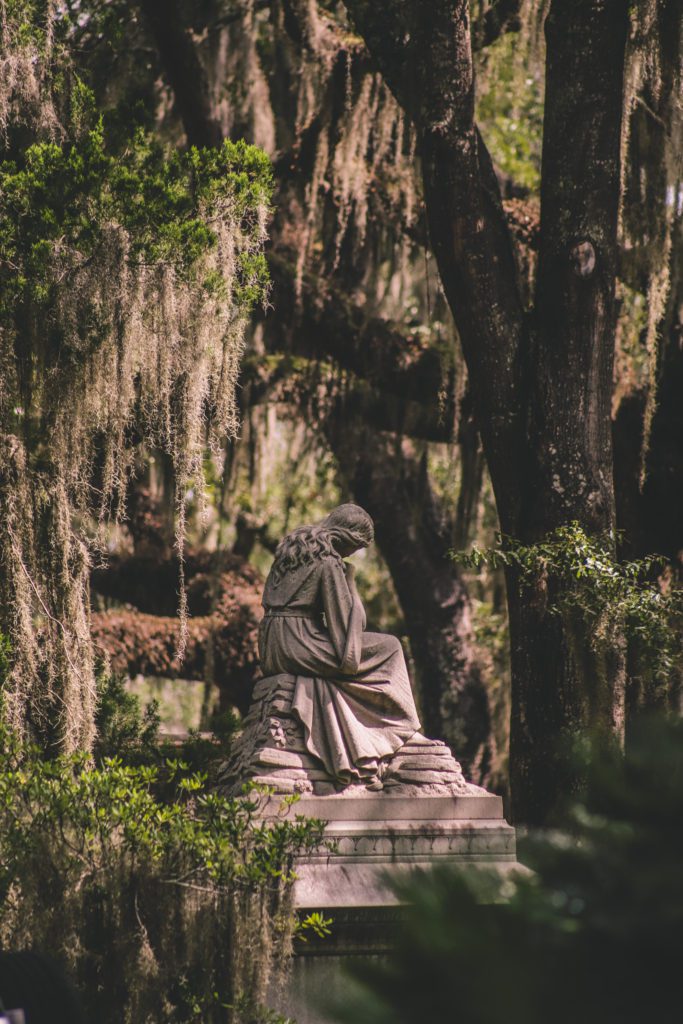
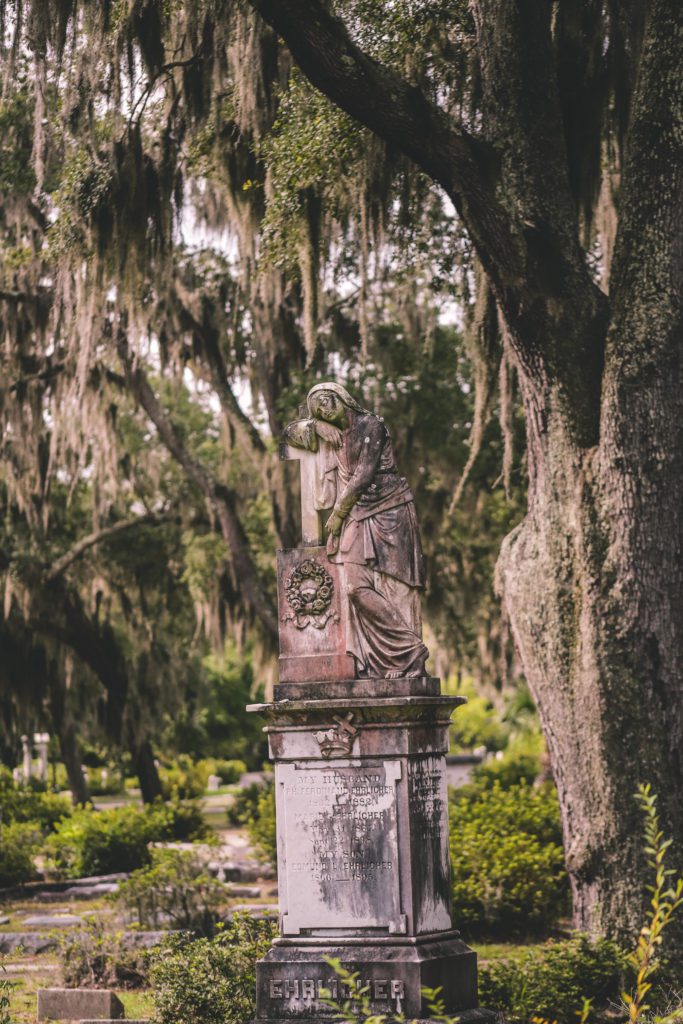
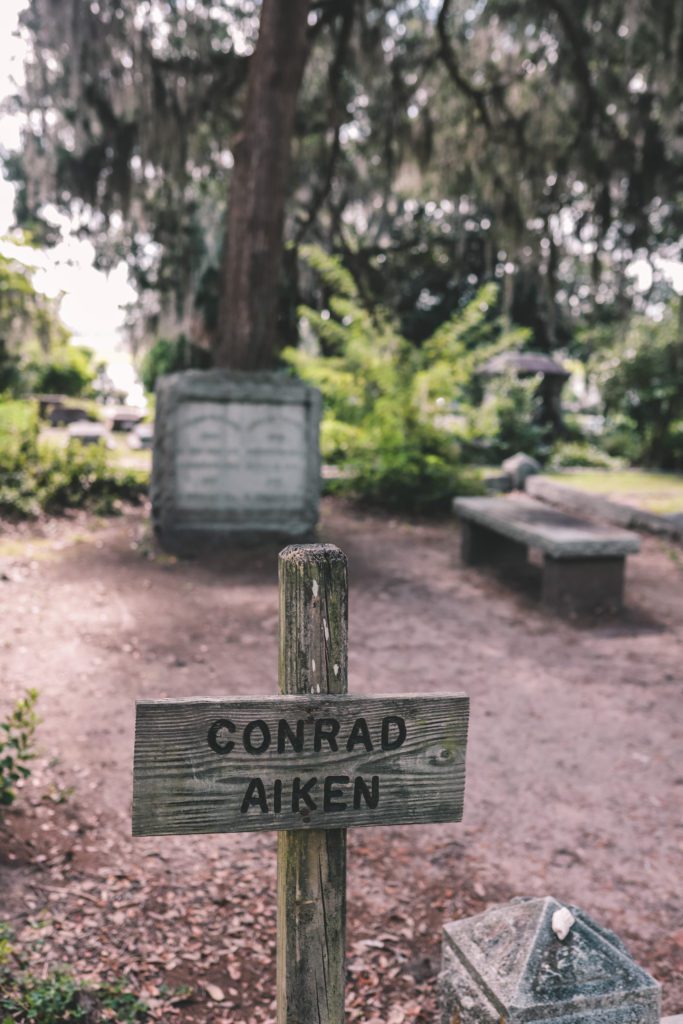
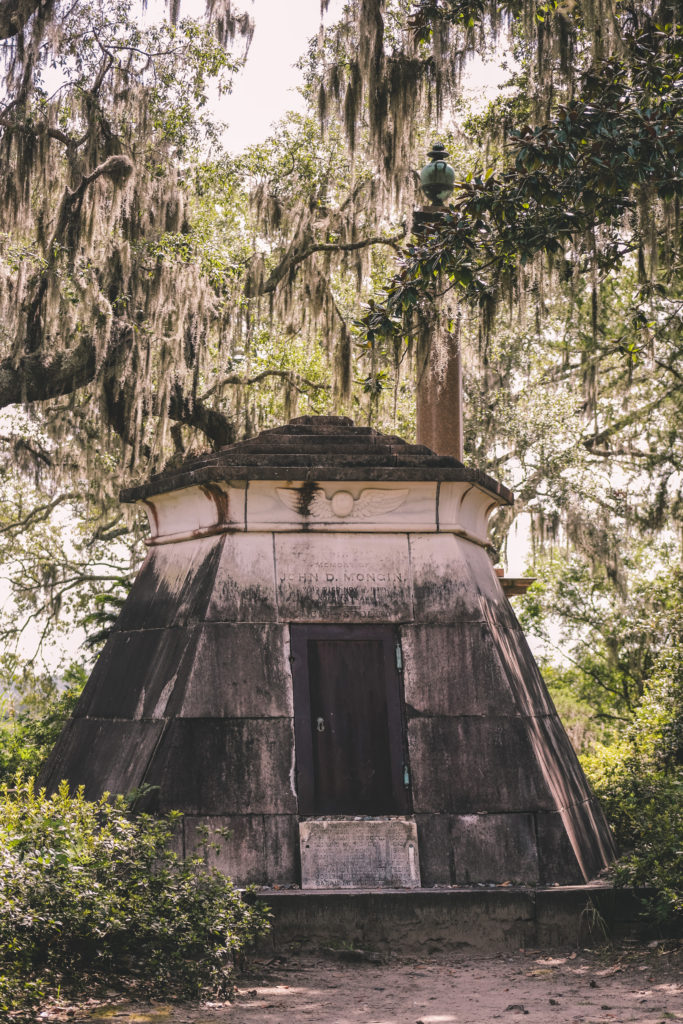
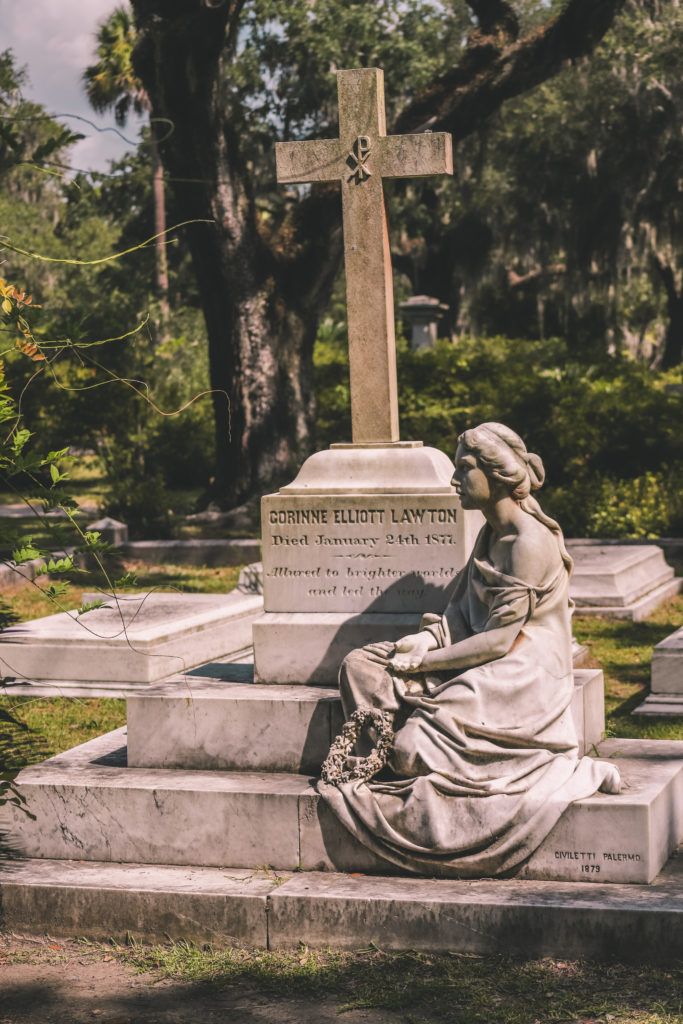

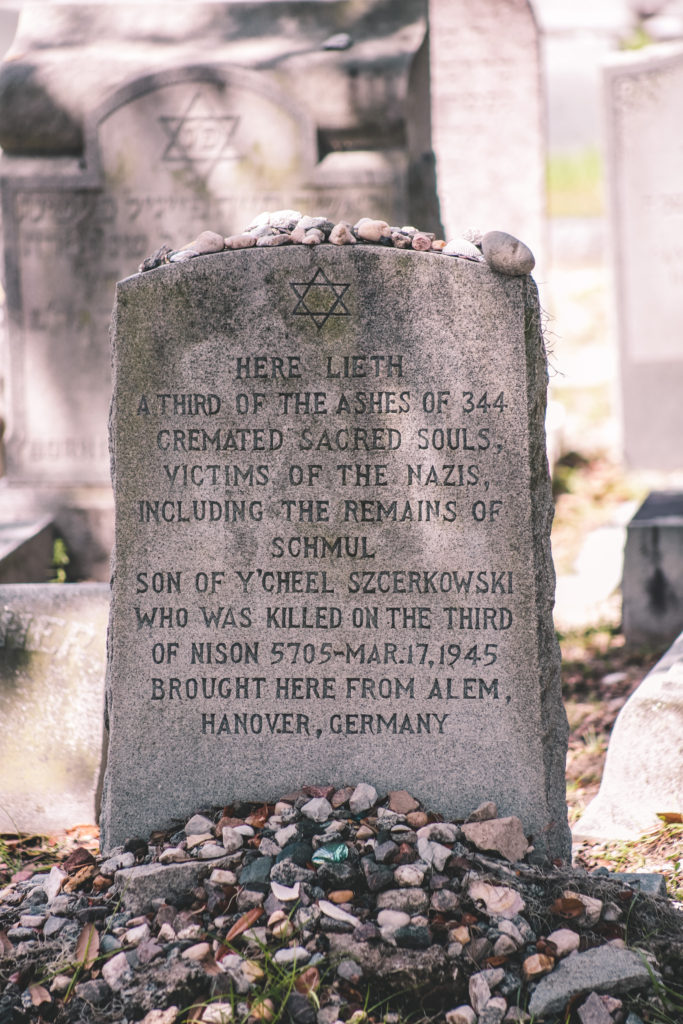
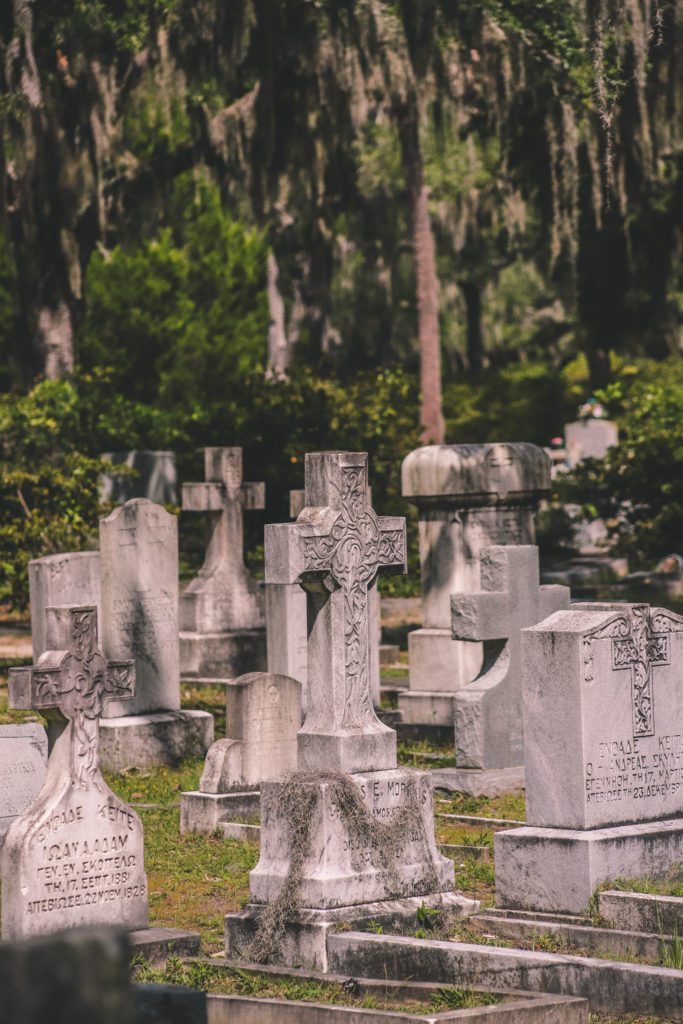
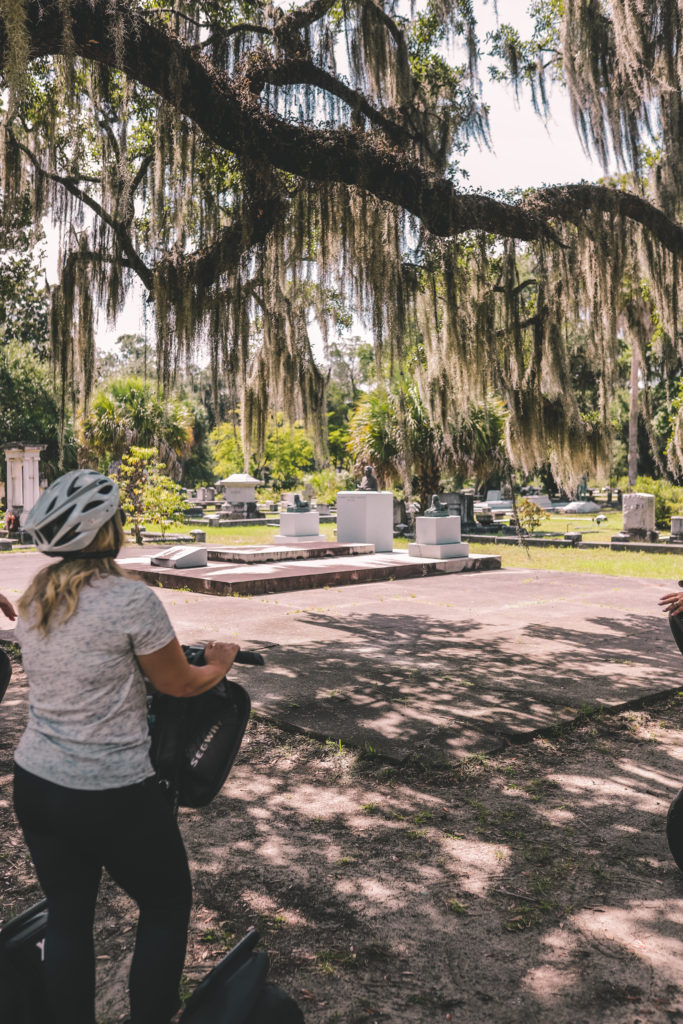

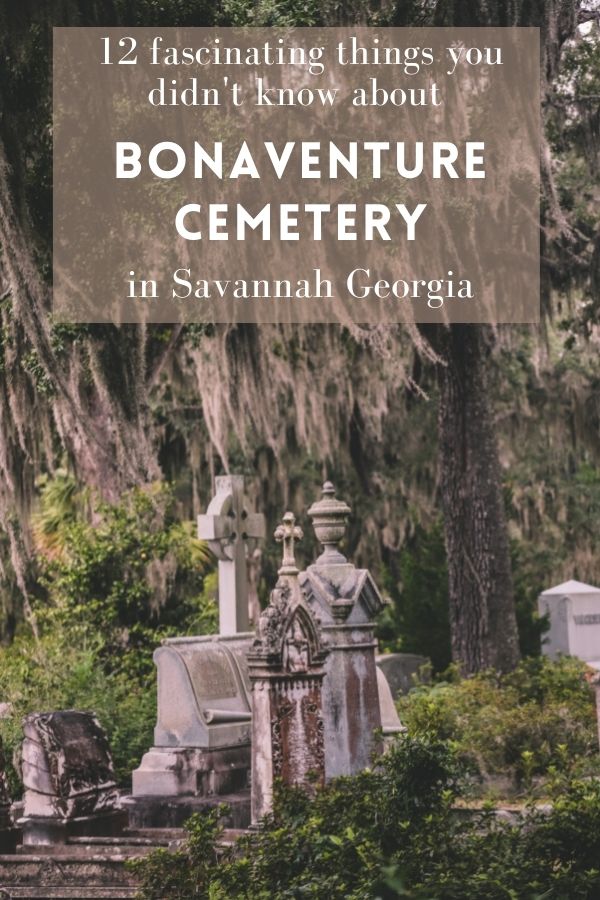
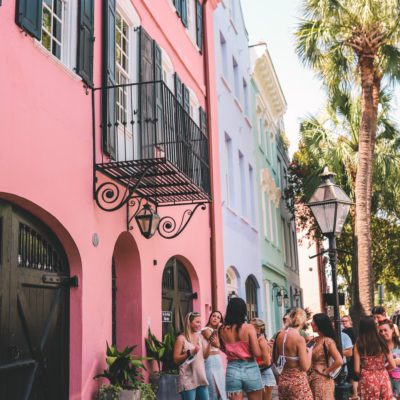


It’s Gracie Watson not Watkins! Please make the correction. https://www.findagrave.com/memorial/5743256/gracie-perry-watson
Thank you for making me aware of the typo!